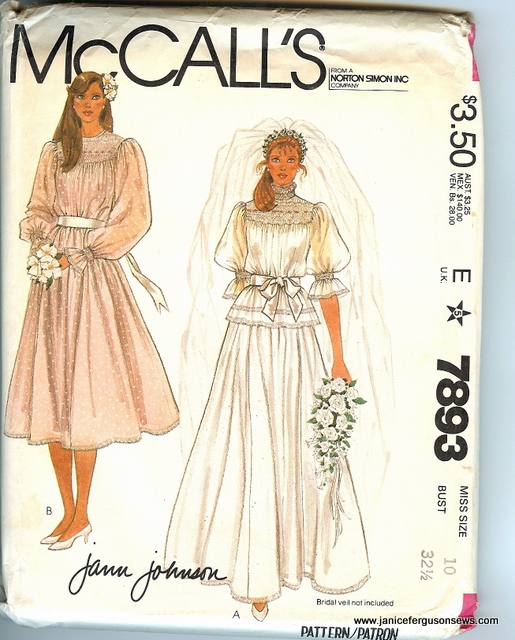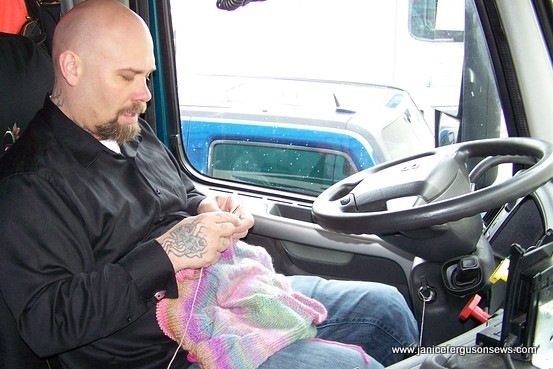This post is just a story, but a true one. I have no techniques or photos to show you, except the pattern front below. But perhaps there is some inspiration.
This whole chain of events is one of my favorite needlework stories.
Many, many years ago, there was a thriving knit shop in our little town. As a customer, I had developed a friendship with the owner, Pat, who was aware that I taught smocking and other needlework classes.
One spring Saturday afternoon, Pat called to ask if I could pleat some fabric for a customer who had just walked into her shop requesting that service. The “customer” was actually an older couple who had come to town from their home some 20 miles away, deep in the central Florida countryside. They were hoping to get the pleating done today. “Of course,” I said.
Dr. Jones and his wife arrived at my home a little later. After introducing himself (a retired surgeon) and explaining that his wife had recently become deaf, he presented me with a bag of batiste and this pattern, with which I was very familiar.
I knew full well that this was a pretty ambitious project. My friend Mary had made this beautiful dress a year or so before then, but she had come to a standstill because she couldn’t get the hang of bullion roses. So we did a work swap. She smocked a dress for my daughter and I embroidered the 88 bullion roses as specified on the pattern.
But back to Dr. and Mrs. Jones and the pleating. He explained that this was to be the wedding dress for their son’s bride. I said I would have it done in 3 days.
The pattern pieces were all cut, including the armhole curve, so I quickly stitched scrap fabric to the curve so the fabric would enter the pleater uniformly.
As I bagged up the pleated fabric and pattern, Dr. Jones asked if, perchance, I had a book on smocking he could buy because “My wife doesn’t know how to smock.”
Oh boy. This wedding dress was in big trouble. So he was sold one of my many how-to smock books and encouraged to come up with a back up plan, like a ready-to-wear dress.
“Oh, we have plenty of time,” he said. “The wedding isn’t for 3 weeks.” He was so confident!
Biting my cheek, I told him that I would love to see the dress when it was finished. He promised I would see it and they left. I said a prayer for them and that hopeful bride.
Two weeks later, Dr. Jones called to see if he could come by to show me the dress. I was astounded, but of course, wanted to see the finished gown.
He and his silent wife came with the beautifully smocked and well constructed dress, as well as a matching slip. I congratulated his wife on a job well-done, but he quickly interjected that since she really couldn’t seem to get the hang of smocking, he had done it—smocking, construction, and all 88 perfect bullion roses!  His wife, he proudly announced, had made the slip.
Seeing my amazement, he explained that he had been bedridden for almost a year as a child with something like scarlet fever–I don’t recall exactly what the ailment was. But to keep him entertained and busy, his mother had taught him all sorts of needlework–smocking, knitting, crochet, embroidery, tatting. He had not pursued these arts after he recovered, but it did influence his decision to become a surgeon.
So off they went, leaving me with my mouth hanging open and shaking my head.
But that is not the end of the story. ……
Two years later, Dr. Jones called me again, asking if I could do some pleating for him. He explained that his wife had died shortly after the wedding but now he was blessed with a granddaughter, a product of the marriage for which he had smocked the dress.
He had spent some time in Arizona with his smocking sister who had pleated several bishops for him to smock for this precious grandchild. He had finished smocking them. He was awaiting delivery of his own pleater, but meanwhile, he wanted to get more bishops made up.
When he arrived, he had a big box to show me. It was overflowing with projects he had made for his granddaughter, ready for shipment to her. In addition to three bishop dresses, there were embroidered pillowcases, some with crochet, some with tatted edges, a beautiful, lined, woolen coat and bonnet, a few knitted sweaters and a crocheted blanket.
Can you imagine my amazement? I was dumbstruck.
I never heard from Dr. Jones again, but I’ve thought of him again and again. How pleased his mother would be to know that her needlework instruction had not only steered him to his career, but had given him such pleasure later in his life.
As I share my needlework skills with my 7 yo granddaughter, I look for opportunities to involve my 6 yo grandson. Who knows the breadth and scope and length of the the impact these skills might have on their lives?
Apparently, Dr. Jones is not the only male needleworker. Read about this knitter here.
Do you know men who stitch? Are you teaching children to sew? I’d love to hear about it.




27 responses to “The Doctor and His Stitches”